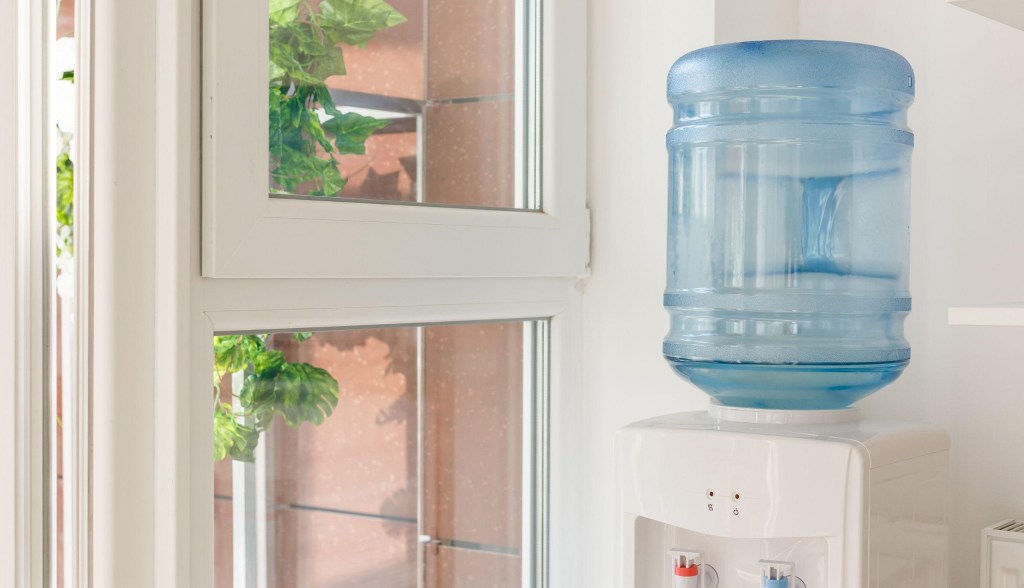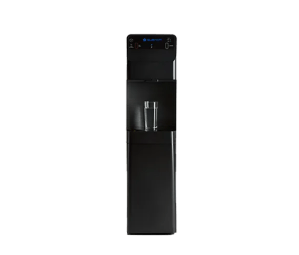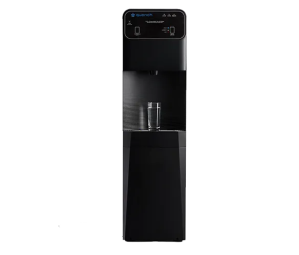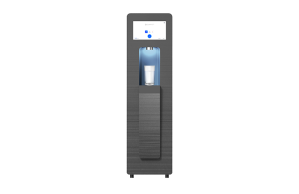
The True Cost of Bottled Water Dispensers
On average, bottled water service costs $4,200 per year for 50 users, which represents a monthly cost of $350. A 5-gallon delivery service costs slightly less, averaging $283 per month.
Costs vary based on consumption and delivery frequency, but even infrequent deliveries can result in more than you’re comfortable spending. Learn more about bottled water dispenser costs, including the hidden expenses that don’t show up on an invoice.
What are bottled water dispensers?
A bottled water dispenser is a device that holds water in large jugs. They’re typically found in offices, gyms and other commercial spaces where many people need to drink water each day. Top-load models use gravity to feed water into the dispensing unit, while bottom-load models store water inside a cabinet.
Many offices have bottled water dispensers that stand upright on the floor, but there are countertop models available for small spaces. Some dispensers even come with hot and cold water taps, giving employees the option of preparing tea, coffee and other hot beverages during work hours.
Average cost of bottled water delivery
Office water delivery service costs vary based on several factors, including your location, your choice of delivery service and how often you need to replenish your supply. According to the International Bottled Water Association, the average wholesale price of non-sparkling water is $1.44 per gallon. If you use 5-gallon jugs, that’s $7.20 every time you need a refill. You may also have to pay delivery fees and other surcharges.
Data from Statista indicates that bottled water delivery is a booming business. In 2025, out-of-home consumption is expected to reach 36.91 billion liters — that’s about 10.3 billion gallons of water. Bottled water dispensers can be found almost anywhere, from hospital waiting rooms to warehouse break areas.
Hidden costs of bottled delivery
Water isn’t the only cost associated with having a bottled water dispenser on your premises. There are also several hidden costs. These costs aren’t always immediately obvious, but they can add up quickly, making your workplace hydration program more expensive than expected.
Delivery fees
Delivery fees can vary significantly from one supplier to another. Some companies offer free delivery with a minimum purchase amount or a monthly subscription. Others charge based on the number of miles traveled to your location or the number of stops made per month. The average bottled water delivery price can increase significantly when you add these charges.
Storage space
When you install a bottled water dispenser, you have to make room for extra bottles. Otherwise, you’ll have to schedule frequent deliveries, increasing your total cost of ownership. Water jugs take up room that could be used to hold meetings or store office supplies.
Worker downtime
Once a jug is empty, someone needs to load a new one, or else you won’t have fresh water available for employees to drink. This involves walking to the storage area, lifting the jug and carrying it back to the dispenser. It may also take a few minutes to seat the bottle correctly. A few minutes here and there can quickly add up to a lot of downtime, especially if employees argue over whose turn it is to change the bottle.
Environmental and sustainability costs
The most important hidden cost of bottled water delivery is its detrimental impact on the environment. The use of large plastic bottles has the following ramifications:
- Plastic waste: Both small and large plastic bottles are hugely wasteful, considering humans use 1.3 billion plastic bottles every day. Plastic bottles also take an extremely long time to decompose.
- CO2 emissions: Manufacturing plastic water jugs increases carbon dioxide emissions, as does transporting jugs to businesses around the world. If your company has a sustainability program, you might want to look for an alternative.
- Oil use: Many bottles are made from polyethylene terephthalate (PET), which comes from crude oil. The extraction of crude oil contributes to air and water pollution, disrupts local ecosystems and has a negative impact on the food supply.
- Water waste: It takes 3 liters of water to package just 1 liter of bottled water. Water waste is a significant concern in drought-prone areas, and it’s also at odds with corporate sustainability goals.
Bottleless vs. bottled dispensers: cost comparison
Now that you know the true bottled water dispenser cost with hidden fees included, it’s time to explore alternatives. Culligan Quench offers bottle-free water dispensers, making it easy to run a successful hydration program without driving up your expenses or contributing to environmental damage.
A bottleless water cooler is essentially a modern water dispensing system that connects directly to your building’s existing water line. This eliminates the need for bottled water delivery altogether, using advanced filtration technology to provide an endless supply of clean, purified water on demand. When comparing bottled water delivery vs. filtration, the winner is clear — bottle-free filtration saves money.
In fact, bottleless water dispensers cost up to 80% less than bottled water delivery, so you can improve employee well-being without worrying about high monthly bills. For example, if you were paying $350 per month for bottled water delivery, saving 80% would mean cutting your costs to just $70 per month.
Long-term savings with bottleless water coolers
Sure, $70 per month may not seem like much, but it adds up over time. In just one year, you can save $840 — and that’s if you have 50 employees. For companies with hundreds of workers, the savings add up even faster. In a company with 500 employees, for example, the savings multiply to $700 per month or $8,400 per year.
If you don’t want to shoulder the cost of bottled water service, you don’t have to eliminate your hydration program completely. Culligan Quench makes it easy for employees to stay hydrated without driving up your monthly costs. Reach out today to find out about the tailored solutions available for your business.
FAQs
Before you choose a hydration solution, it’s important that you have the facts. We answered some of the most frequently asked questions about bottleless water coolers to help you make an informed decision.
How do bottleless water coolers work?
A bottleless water cooler connects to your existing water line. It filters municipal water and keeps it cool, ensuring employees always have access to a refreshing drink.
Are bottleless water coolers safe and hygienic?
Yes. Many models have touchless dispensing options and sealed tanks to prevent contamination. You can even get a bottle-free cooler with an antimicrobial surface.
How much maintenance does a bottleless water cooler require?
Bottleless water coolers require very little maintenance. You only have to change the filter and sanitize the unit once or twice per year.
Authored by

Elizabeth Smith
Elizabeth Smith is a seasoned writer with a background in science and technology, now focused on workplace wellness, sustainability, and smart business solutions. With more than a decade of experience writing for universities and private companies in the engineering and tech sectors, she brings a research-driven approach to every topic.
Recommended products
Culligan Quench has an advanced suite of point-of-use systems that are designed to meet the needs of workplaces of all shapes and sizes. Here are some products we recommend for your business.
Q4 Touchless Bottleless Water Cooler
Available with quenchWATER+ electrolyte water

Q12 Touchless Bottleless Water Cooler
Available with quenchWATER+ electrolyte water

Q14 Bottleless Water Cooler
Available with quenchWATER+ electrolyte water